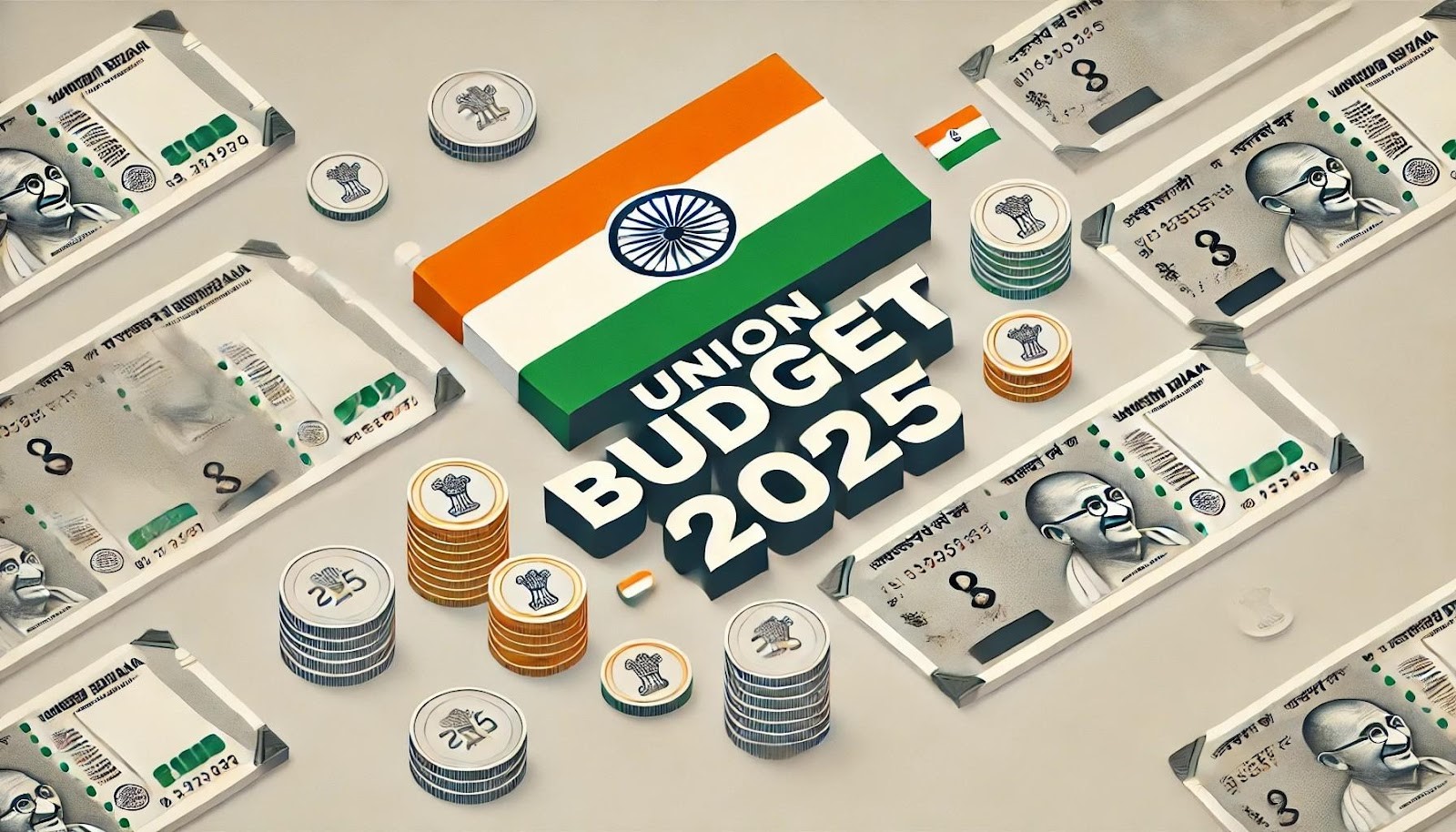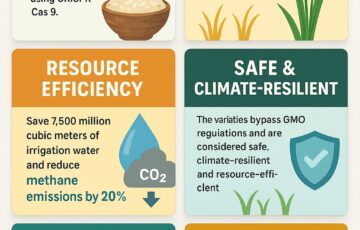Union Budget 2025: Ambitions, Challenges, and Trade-offs
Syllabus:
GS-2:
Indian Constitution , Government Policies & Interventions
GS-3:
Growth & Development ,Planning , Government Budgeting , Fiscal Policy , Inclusive Growth
Focus:
The Union Budget 2025, presented by Finance Minister Nirmala Sitharaman, focuses on India’s fiscal consolidation, tax reforms, and sectoral growth ambitions. However, concerns persist over the feasibility of revenue projections, execution of key initiatives, and balancing growth with macroeconomic stability.
Macroeconomic Challenges and Budget Context:
- Pressing Issues: The Union Budget, presented by Finance Minister Nirmala Sitharaman on February 1, comes amidst significant macroeconomic challenges:
- Persistently high taxes.
- Unemployment affecting the middle class.
- Weak private investment.
- Rising external vulnerabilities that could derail growth.
- A looming fiscal overhang.
- Ambitious Vision: The Budget outlined a roadmap for “Viksit Bharat” (developed India), with goals spanning several sectors:
- Agriculture.
- Manufacturing.
- MSMEs.
- Social welfare.
- Infrastructure.
- Need for Scrutiny: While the Budget highlights ambitious plans, deeper scrutiny is necessary to assess the feasibility and long-term impacts of these proposals.
Union Budget 2025 Key Terms:
- Revenue Receipts:
- Income from taxes, fines, and services.
- Does not affect assets or liabilities.
- Capital Receipts:
- Funds from selling government assets or borrowing.
- Affects assets or liabilities.
- Revenue Expenditure:
- Regular government spending (e.g., salaries, subsidies).
- No asset creation.
- Capital Expenditure:
- Spending on infrastructure and long-term assets.
- Leads to economic growth.
- Deficit Budget:
- When expenditure exceeds income.
- Requires borrowing or creates fiscal imbalance.
- Surplus Budget:
- When income surpasses expenditure.
- Generates excess funds.
- Direct Taxes:
- Taxes like income tax.
- Paid directly by individuals or entities.
- Indirect Taxes:
- Taxes like GST.
- Passed on from consumers to businesses and then to the government.
- Disinvestment:
- Selling government stakes or PSUs.
- Generates capital receipts.
- Borrowing:
- Government loans creating future liabilities to repay.
- Recovery of Loans:
- Government recovers money from past loans.
- Reduces assets but receives funds.
Union Budget 2025 vs Economic Survey 2025:
- Purpose:
- Economic Survey: Analyzes past economic performance and offers policy recommendations.
- Union Budget: Provides a detailed statement of revenue and expenditure for the upcoming fiscal year.
- Preparation:
- Economic Survey: Prepared by the Chief Economic Adviser.
- Union Budget: Prepared by the Budget Division under the Department of Economic Affairs.
- Presentation:
- Economic Survey: Presented a day before the Union Budget.
- Union Budget: Presented annually on February 1st.
- Constitutional Requirement:
- Economic Survey: Not mandatory.
- Union Budget: Constitutionally mandated under Article 112.
- Content:
- Economic Survey: Provides economic analysis and policy suggestions.
- Union Budget: Contains revenue estimates, expenditure proposals, and tax policies.
- Approval:
- Economic Survey: No parliamentary approval needed.
- Union Budget: Requires approval from both Houses of Parliament.
- Nature:
- Economic Survey: Analytical and advisory.
- Union Budget: A financial statement and policy document.
- Scope:
- Economic Survey: Reviews the past year’s economic performance.
- Union Budget: Outlines plans for the upcoming fiscal year.
- Legal Status:
- Economic Survey: Non-binding.
- Union Budget: Legally binding and requires parliamentary approval.
- Influence on Policy:
- Economic Survey: Provides recommendations for future policies.
- Union Budget: Directly implements financial and policy decisions.
- Public Availability:
- Both documents are publicly available.
- Duration:
- Economic Survey: Reviews the past fiscal year.
- Union Budget: Plans for the upcoming fiscal year.
Fiscal Consolidation and Revenue Targets:
- Fiscal Consolidation Goal: The Budget targets fiscal consolidation at 4% of GDP by FY26. However, achieving this goal depends heavily on:
- Optimistic Revenue Projections:
- A projected 2% growth in total tax revenue.
- A 4% rise in income tax revenues.
- These projections appear ambitious given the tax cuts announced and economic headwinds such as:
- Soft domestic consumption.
- Weakened external demand.
- Asset Monetisation:
- The success of the second asset monetisation plan (2025-30) is critical to achieving the fiscal target.
- The underperformance of the previous asset monetisation initiative raises concerns about the feasibility of this plan.
- Private Sector Crowding:
- The ₹11.54 lakh crore in market borrowings could crowd out private capital at a time when credit demand is already subdued.
- To meet ambitious revenue targets, the government will need to:
- Improve tax buoyancy.
- Streamline tax administration.
- Ensure realistic asset monetisation
- Optimistic Revenue Projections:
Personal Income Tax Revisions and Trade-offs:
- Income Tax Revisions:
- The Budget introduces significant revisions in the personal income-tax structure under the new regime:
- Exemption of incomes up to ₹12 lakh.
- Reduction in tax liabilities across various income brackets.
- Relief vs. Cost:
- These changes provide relief to middle-income taxpayers but result in an estimated ₹1 lakh crore in foregone tax revenue.
- This raises concerns about the government’s ability to fund critical developmental projects, such as:
- Infrastructure.
- Social welfare initiatives.
- Tax Base and Sustainability:
- The tax base has been shrinking, with household savings decreasing over the past decade (falling to 4% of GDP in FY23).
- This poses questions about the long-term sustainability of tax cuts, particularly when investment in infrastructure and social welfare remains crucial for inclusive growth.
- The Budget introduces significant revisions in the personal income-tax structure under the new regime:
Manufacturing Sector: Ambition vs. Execution:
- Manufacturing Target:
- India aims to become a global manufacturing powerhouse, but the country has struggled to achieve significant growth in this sector, which contributes just 17% to GDP.
- Previous initiatives like production-linked incentives (PLIs) have had moderate success, particularly in electronics, but their scalability and long-term effectiveness remain uncertain.
- Support for MSMEs:
- The Budget announces enhanced credit facilities for MSMEs and a National Manufacturing Mission aimed at improving ease of doing business and fostering a future-ready workforce.
- It also proposes an increase in MSME classification limits (investment and turnover thresholds), which could enhance economies of scale.
- Core Issues Unaddressed:
- The measures fall short in addressing underlying issues such as:
- Regulatory inefficiencies.
- Infrastructure gaps.
- Low innovation capacity.
- Lack of R&D Investment:
- The absence of concrete measures to boost industrial research and development (currently at just 64% of GDP) undermines India’s ability to compete globally, particularly with innovation-driven economies like China and Germany.
- The measures fall short in addressing underlying issues such as:
Agriculture, Export Strategy, and External Sector Gaps:
- Agricultural Reforms:
- The Budget introduces several initiatives to boost agricultural productivity and resilience, including:
- The Prime Minister Dhan-Dhaanya Krishi Yojana.
- National Mission on High-Yielding Seeds.
- An increase in Kisan Credit Card (KCC) loan limits from ₹3 lakh to ₹5 lakh.
- These initiatives focus on targeted interventions, especially in 100 low-productivity districts, and shift from blanket subsidies to more precision support.
- The Budget introduces several initiatives to boost agricultural productivity and resilience, including:
- Systemic Agricultural Challenges:
- However, these measures do not fully address systemic inefficiencies in agricultural markets:
- Price volatility.
- Market access
- The lack of focus on promoting agricultural exports, especially in sectors like millets and natural farming, represents a missed opportunity.
- However, these measures do not fully address systemic inefficiencies in agricultural markets:
- External Sector:
- The Budget introduces initiatives such as Bharat Trade Net (BTN) and export credit support for MSMEs, but these lack the scale needed to address India’s persistent trade deficits.
- While services exports, particularly IT and BPO, are growing robustly, efforts to diversify the export portfolio are insufficient.
- India’s vulnerability to rupee depreciation and declining forex reserves necessitates a more ambitious export strategy.
Climate Action and Clean Energy:
- Climate Strategy:
- The Budget signals intent towards climate action and clean energy, but the financial commitments are cautious and incremental rather than transformative.
- Notable initiatives include:
- Incentives for lithium-ion battery recycling.
- Duty exemptions on critical minerals.
- Support for domestic solar photovoltaic and battery manufacturing.
- Supply-Chain Resilience:
- These steps aim to reduce import dependence, but without simultaneous investment in grid modernisation, energy storage, and industrial decarbonisation, the transition to a low-carbon economy could remain fragmented.
- Balancing Growth with Stability:
- The Budget must balance accelerating growth with maintaining macroeconomic stability and achieving inclusive development.
- The credibility of the Budget will depend on the government’s ability to execute effectively, make necessary course corrections, and manage the fundamental trade-offs of economic growth.
Conclusion:
While the Union Budget presents a vision for India’s growth and development, its success hinges on the execution of fiscal policies, structural reforms, and strategic investments. The ambitious targets and measures, particularly in manufacturing, agriculture, and climate action, require deeper scrutiny to determine their long-term effectiveness in addressing the country’s macroeconomic challenges. The government’s ability to maintain fiscal discipline while stimulating growth and ensuring social welfare will ultimately determine the Budget’s impact on India’s future.
Source: TH
Mains Practice Question:
Discuss the key challenges in the 2025 Union Budget, focusing on fiscal consolidation, tax reforms, and sectoral growth targets. How can India balance these ambitions with the need for macroeconomic stability and inclusive development?






